new posts in all blogs
Viewing: Blog Posts Tagged with: Autism, Most Recent at Top [Help]
Results 1 - 25 of 76
How to use this Page
You are viewing the most recent posts tagged with the words: Autism in the JacketFlap blog reader. What is a tag? Think of a tag as a keyword or category label. Tags can both help you find posts on JacketFlap.com as well as provide an easy way for you to "remember" and classify posts for later recall. Try adding a tag yourself by clicking "Add a tag" below a post's header. Scroll down through the list of Recent Posts in the left column and click on a post title that sounds interesting. You can view all posts from a specific blog by clicking the Blog name in the right column, or you can click a 'More Posts from this Blog' link in any individual post.
Isaac and his Amazing Asperger Superpowers! by Melanie Walsh
|
Storytime Standouts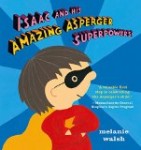
Isaac and his Amazing Asperger Superpowers! written and illustrated by Melanie Walsh
Picture book about a child with Asperger’s Syndrome published by
Candlewick PressWritten from the perspective of a boy with Asperger’s Syndrome
,
Isaac and His Amazing Asperger Superpowers!
is a cheerful, positive and reassuring picture book that explains how Isaac’s thoughts and behavior sometimes differ from those of his friends. Well-suited to preschool-age children or early primary classroom use, bright, bold illustrations are visually appealing and will be easily seen and interpreted in a group or classroom setting.
Friends, family members and classmates will discover that children with Asperger’s Syndrome may have different interests, energy levels and ways of interacting than others do. For example, they may like to bounce rather than play team sports or they may fidget with a toy in order to relax and listen in class. They may have difficulty understanding jokes or some in social situations. Insights are shared matter-of-factly, with respect for both the Asperger’s child and a child who does not have Asperger’s.
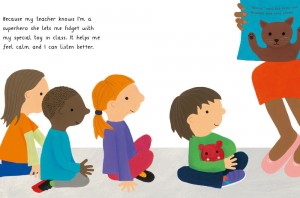
Using meaningful examples and fun illustrations, Walsh helps young readers to understand that children with Asperger’s Syndrome have strengths including a great memory for facts, curiosity and a heightened awareness of sounds. She also shows the special relationship an Asperger’s child can have with pets and family members.
A great addition to a personal or professional library, end papers include a list of Autism and Asperger’s Syndrome links.
Isaac and His Amazing Asperger Superpowers! at Amazon.com

Isaac and His Amazing Asperger Superpowers! at Amazon.ca

Read our reviews of other picture books about Autism and Asperger’s Syndrome
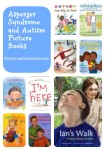
Storytime Standouts - Raising Children Who Love to Read
Sam, his sister Emma and their parents live in a...My Brother is Autistic, A Picture book about Autism Written from the perspective of an older sibling, My Brother...I’m Here by Peter H. Reynolds I’m Here written by Peter H. Reynolds You will also... 

Playing with sensory balls
A few months back I saw a photo from Hennepin County Library on Instagram. It showed how much fun they had at their Sensitive Family Time — a time for families living with autism to explore the library. As I was looking for a way to partner with our local Autism Centre, I jumped on this fantastic idea. After a few phone calls and emails, we had a date. We opened one of our branches for 2 hours on a Sunday afternoon, just for these families. The families had signed up in advance with the Autism Centre, so we knew who to expect. Staff from their centre attended, and welcomed the families. Our staff were on had to show them around the library, read some stories, and get them signed up for library cards.
We had some toys out (I had these already from storytime), and just let the kids roam around. They played, I read a few books, they enjoyed themselves. Many of the families had never taken their child to the library before– they feared disruptive behavior and did not want to cause a scene. The kids were great — once they found out that the library was a safe, welcoming place, they had a grand time. And so did I. I tried something outside my comfort zone, something I really knew nothing about other than I knew there were families that wanted to use the library but maybe felt uncomfortable doing so.

Program room is set up
We’ve got another one in the works, and I look forward to it. It was such a simple idea, such an easy way to reach out. I have to thank Hennepin County Library for their great program, and for graciously allowing me to borrow their idea and run with it. Try something new. It just might be worth it.
The post Trying something new appeared first on ALSC Blog.


By: Joe Hitchcock,
on 10/16/2015
Blog:
OUPblog
(
Login to Add to MyJacketFlap)
JacketFlap tags:
Books,
Music,
Autism,
*Featured,
music therapy,
Psychology & Neuroscience,
music psychology,
absolute pitch,
Child as Musician,
children with autism,
Gary McPherson,
music as language,
Solange Glasser,
Add a tag
Every day after school, eager children cross the doorstep of a suburban Melbourne house. It’s the home of Daphne Proietto, an exceptional piano teacher who gives lessons to children six days a week, entirely pro bono. While some kids would be more inclined to see piano lessons as a chore, these kids can’t wait. The reason? Music for them is more than just an activity.
The post Music: the language of play appeared first on OUPblog.
Oh this book is utterly glorious! I picked up Are You Seeing Me? by Darren Groth on impulse and am totally glad I gave it a chance. This book is so special and I’m squawking with the effort of writing a review to give it justice! It’s about Australian twins, Justine and Perry (who has autism), who […]
When someone you live with has autism, you learn to pick your battles.
This week, Senior Management and I took our daughters to the Boardwalk in Point Pleasant. They have a
lovely aquarium there. We had a great time. Unfortunately, one of the amusement arcades was changing its store front in preparation for the Halloween season as we passed.
Long story short, as soon as we got to home, our youngest (by two minutes) insisted we get out the pumpkin cookie jar, the themed tea towels, tea cups/straws/beakers/plates and anything else with a Fall/Halloween motif, along with the relevant decorations.
On the bright side, we live in the US now, where Halloween and Thanksgiving are big events on the social calendar, so we probably won't have to get out the Christmas
decorations for a couple of months yet - back in the UK, Santa makes his first appearance in store windows as early as September.
Why not make this April your chance to reach out to the families in your community who are affected by autism? Anything you do can make a positive impact: from offering a program like Sensory Storytime to something more passive like creating a display, booklist, or web post. The important thing is that families with children on the autism spectrum feel welcome and included in the life of the library.
One way to get families with children with all types of disabilities into your library is to offer an informational program for parents and caregivers. Did you know that in every state there is a dedicated Parent Training and Information Center (PTI) that offers information and workshops about disabilities, special education rights, and local resources for families? PTIs are funded by the US Department of Education Office of Special Education Programs.
Some states also have Community Parent Resource Centers (CPRC), which offer the same types of support as PTIs, but focus on reaching underserved populations (rural, low income, or limited English proficiency). You can use this interactive map to find the PTI or CPRC in your area.
Why reach out to a PTI? They can come to the library and do a workshop on Early Intervention, special education basic rights, the IEP process, or transition services (just to name a few). By offering a parent workshop like this, you can highlight the library as a place where families of children with all types of disabilities, including autism, can come together for learning and support. Once those parents and caregivers are inside the library, you can begin a larger conversation. “How can the library better support you? What types of materials or programs would be most useful for you and your child(ren)?”
While you’re at it, partner with your local Early Intervention office, Special Education department, Special Education Parent Advisory Council, and Arc. These established local organizations can help promote your event, and even be on hand to answer questions, hand out brochures, etc.
Have you offered parent workshops at your library? Did you work with your local PTI or another group? What topics are most useful for parents in your area? Let’s continue the conversation in the comments below.
Ashley Waring is a Children’s Librarian at the Reading Public Library in Reading, MA and a member of the Liaison with National Organizations Committee.
The post April is Autism Awareness Month – Partner Up to Reach Families in Your Community appeared first on ALSC Blog.


By:
vschneider46,
on 2/2/2015
Blog:
The Open Book
(
Login to Add to MyJacketFlap)
JacketFlap tags:
Diversity,
resources,
disabilities,
families,
autism,
Educators,
Autism awareness month,
Special Education,
Disability,
Educator Resources,
self-advocacy,
Common Core State Standards,
Add a tag
In part 1 of this post, I spoke about my experience teaching in a nonverbal autistic classroom and its most meaningful takeaways. Part 2 explores respectful, useful resources for people on the autism spectrum, their family members, and educators.
What is autism?:
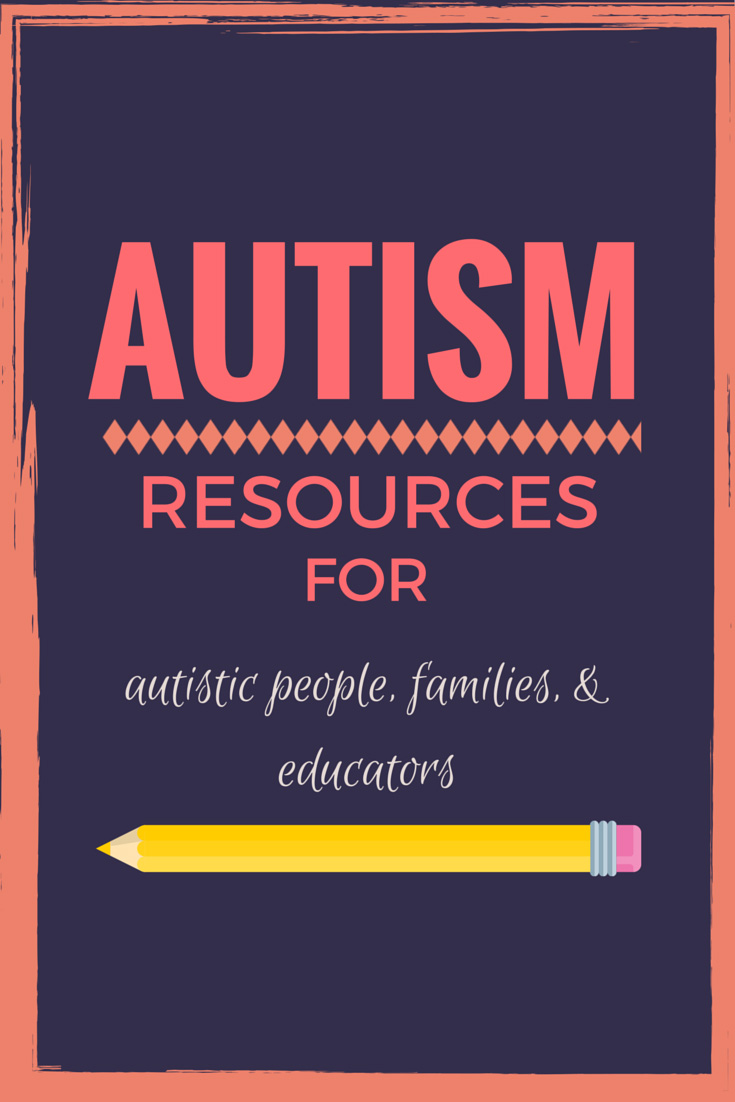
For people on the autism spectrum:
For families of people with ASD:
Early intervention services & treatment options:
For educators of people with ASD:
Get involved:
Books with characters with disabilities:
Do you have any recommend resources, organizations, or websites that you would like to share with us? Let us know in the comments!
 Veronica has a degree from Mount Saint Mary College and joined LEE & LOW in the fall of 2014. She has a background in education and holds a New York State childhood education (1-6) and students with disabilities (1-6) certification. When she’s not wandering around New York City, you can find her hiking with her dog Milo in her hometown in the Hudson Valley, NY.
Veronica has a degree from Mount Saint Mary College and joined LEE & LOW in the fall of 2014. She has a background in education and holds a New York State childhood education (1-6) and students with disabilities (1-6) certification. When she’s not wandering around New York City, you can find her hiking with her dog Milo in her hometown in the Hudson Valley, NY.

By: Julia Callaway,
on 10/31/2014
Blog:
OUPblog
(
Login to Add to MyJacketFlap)
JacketFlap tags:
Journals,
brain,
Autism,
ASD,
neurology,
oxytocin,
*Featured,
oxford journals,
Science & Medicine,
Health & Medicine,
Psychology & Neuroscience,
austim spectrum disorder,
emotion recognition,
Hidenori Yamasue,
Sally-Anne task,
Add a tag
Imagine you are in class and your friend has just made a fool of the teacher. How do you feel? Although this will depend on the personalities of those involved, you might well find yourself laughing along with your classmates at the teacher’s expense. The experience of sharing an emotion with your friends (in this case the fun of getting one over on the teacher) will probably strengthen your friendship further. But in a class of one hundred students, there are likely to be one or two who have trouble understanding the joke.
The ability to infer and understand other peoples’ emotions and beliefs plays an important role in human social relationships. However, for individuals with autism spectrum disorder (ASD) — a developmental disorder that affects approximately 1% of the population and for which there is no established treatment — this can be challenging. While high-functioning individuals with ASD may be able to compensate for difficulties in inferring others’ beliefs, they often continue to have trouble understanding others’ emotions, and this leads to impaired social functioning.
Increasing evidence suggests that oxytocin — a neuropeptide that promotes social behavior and bonding in humans and in animals — can improve emotion recognition in ‘typically developing’ individuals, i.e. those without ASD. Notably, oxytocin improves the ability to infer others’ emotions more than the ability to identify their beliefs. Oxytocin has also been shown to improve social behavior in individuals with autism and to partially reverse patterns of brain dysfunction thought to be responsible for the deficits. This has led to the suggestion that oxytocin could be used to develop medications for currently untreatable psychiatric conditions characterized by social impairments.
However, studies to date have only investigated the ability of oxytocin to improve recognition of basic emotions such as fear or happiness. These differ from “social” emotions such as embarrassment and shame, which require us to represent the mental state of another. Moreover, most existing studies have provided participants with so-called “direct cues” as to others’ emotions, such as their facial expressions or tone of voice. However, these cues are not always available in real life and the ability to identify others’ emotions using only indirect cues is itself important for social functioning. We therefore decided to investigate whether oxytocin would also improve the ability of individuals with ASD to recognise social emotions, even in the absence of direct cues.
To do so, we modified a cartoon-based task called the “Sally-Anne task,” which is commonly used to test for understanding of other peoples’ false beliefs, and used MRI scans to measure brain activity in subjects with and without ASD as they performed the task. In the standard version, participants are shown a cartoon in which one protagonist (Sally) places a ball in a box and then leaves the room. In her absence, another protagonist (Anne) moves the ball to a second box to the right of the first, and Sally then returns. At the end of the story, participants are asked the following questions: “Is the ball in the left-hand box?” to test comprehension of the story, and “Does Sally look for her ball in the left-hand box?” to test for understanding of Sally’s false belief about the location of the ball. To examine participants’ ability to infer others’ emotions, we introduced a third question: “How does Anne feel when Sally opens the left-hand box?”. Given that Ann’s gain effectively depends on Sally’s loss, the emotions involved will be complex social emotions: Ann, for example, might gloat upon realizing that she has fooled Sally by moving the ball.
We discovered that individuals with ASD are less accurate than IQ-matched controls in inferring social emotions in the absence of direct cues such as facial expressions. Moreover, individuals with ASD showed lower activity than controls in two brain regions that contribute to this ability, namely the right anterior insula and superior temporal sulcus. Individuals with ASD who had a normal IQ were not significantly impaired in inferring others’ beliefs; however, they did show lower brain activity than controls in a region implicated in this process, the dorsomedial prefrontal cortex.
In order to determine whether oxytocin could improve the ability of individuals with ASD to identify others’ social emotions, we conducted a double-blind trial. We administered a single dose of either oxytocin or placebo in the form of an intranasal spray to subjects with ASD and to matched controls. As predicted, oxytocin increased the accuracy with which individuals with ASD were able to identify others’ social emotions in the absence of direct cues, and also enhanced their originally-diminished brain activity in the right anterior insula. This increase in activity was not observed in other brain regions or during attempts to understand others’ beliefs, suggesting that oxytocin acts specifically on the ability to infer social emotions.
Ultimately therefore, the results of our behavioral experiments and brain activity studies lend support to the idea that intranasal oxytocin could potentially form the basis of a treatment for at least some of the social impairments in ASD.
Heading image: Oxytocin-neurophysin by Edgar181. Public domain via Wikimedia Commons.
The post Oxytocin and emotion recognition appeared first on OUPblog.


By:
[email protected],
on 9/7/2014
Blog:
Perpetually Adolescent
(
Login to Add to MyJacketFlap)
JacketFlap tags:
Player Profiles,
player profile,
Ann-Marie Finn,
Dragon Tales Publishing,
Isaac's Dragon,
Kaylene Hobson,
author,
Book News,
chapter book,
Author Interviews,
autism,
Add a tag
Kaylene Hobson decided at the age of ten that she wanted to be a writer. But it took her till she was ”much older” to act on it, she claims. Writing was always just for pleasure. Now she has released her first chapter book, Isaac’s Dragon, an amusing and captivating story about a boy […]
Join us for a one-hour
autism-friendly performance of Disney's Beauty and the Beast, Jr. on Saturday, August 2, 2014 at 12:00 noon. Seats are still available, and now open to everyone. Come to the Children's Room to reserve your spot, or call 516-921-0185 or email
[email protected].
Posted by Pam
By: thedarkphantom,
on 4/30/2014
Blog:
The Children's and Teens' Book Connection
(
Login to Add to MyJacketFlap)
JacketFlap tags:
hope,
Asperger's Syndrome,
autism,
self-esteem,
autism awareness,
autism spectrum,
Children's picture books,
detachment,
stimming,
Add a tag
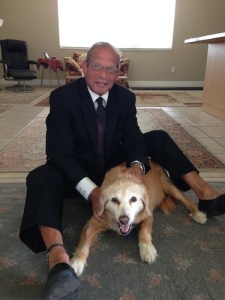 Barry Rudner has been an author/poet of self-esteem books for children for over thirty years, dealing with universal truths such as, reaching for your dreams, homelessness, undying friendships, disability awareness, always being yourself, autism awareness, hope and utter silliness. He firmly believes that we cannot educate our children unless they feel good about who they are; and ultimately, as they grow up, they will not feel good about themselves unless they educate themselves. Please feel free to visit us at our website at www.nickoftime.us.
Barry Rudner has been an author/poet of self-esteem books for children for over thirty years, dealing with universal truths such as, reaching for your dreams, homelessness, undying friendships, disability awareness, always being yourself, autism awareness, hope and utter silliness. He firmly believes that we cannot educate our children unless they feel good about who they are; and ultimately, as they grow up, they will not feel good about themselves unless they educate themselves. Please feel free to visit us at our website at www.nickoftime.us.
Thank you for joining us today, Barry Rudner. Can you please start off by telling us a bit about yourself?
I am a product of an incredible education from my parents. My formal education was a double major in biology and religious studies. I thought I wanted to grow up to become a doctor, but I realized I wanted to grow up and try to answer questions in ways that science cannot. But it is this hybrid of both degrees that gives me a certain insight into the world of children’s literature. In other words, as a scientist, I know the grass is green because the chlorophyl absorbs all the wavelengths of light and reflects the green. But as a children’s author, it is so much more poetic to think that the grass is green because it envies where the children have stepped.
When did you first get bit by the writing bug?
I was in graduate school in the late ’70s trying to earn a Masters degree in neuroanatomy in the hopes of being admitted into medical school. I was at a friend’s house, and he had a room mate who was taking a children’s literature course. On the kitchen table was Shel Silversteins, The Giving Tree. That one moment completely changed the path of my life.I knew that I would spend the rest of my life chasing after what I consider to be the most linear thought ever committed to paper for children. I have been pursuing this goal ever since.
Why did you decide to write stories for children?
I started writing stories for children because I love the way they think. If I may be so bold to quote Robert Burton, Anatomy of Melancholy, “…and such things commonly please us best which are most strange and come from farthest off.” And that in essence is our children. Somehow, in their innocence they understand things that we do not even mean. They are living, breathing allegories. Children are that very thing that “comes from farthest off”.
Do you believe it is harder to write books for a younger audience?
I believe that my life would be much harder if I did not write for children. I believe I understand my audience as well as my craft. Children’s literature is no different than taking a felled tree and stripping it of its bark and limbs and whittling it down to the size of a toothpick; and, right when you think you are done you split it in half. That is children’s literature.
What is your favorite part of writing for young people?
My favorite part about writing for children, especially thirty-two page picture books is to teach them universal truths without ever dealing with what is real. By definition, that is a fairy tale. Teaching them to reach for their dreams. Teaching them to be themselves. Teaching them to be aware of the less fortunate. The beauty of truth is that it is multi-cultural and I never have to deal with what is real: only with what is true.
 Can you tell us what your latest book is all about?
Can you tell us what your latest book is all about?
The latest book is entitled, Silent Voice, and it is a modern day allegory about autism awareness: that the only ought in autism is that we ought not ever give up trying to find the cause and cure. The majority of the world population is not even aware of the pandemic nature of this disorder. But the book is not about finger pointing or blame. It is about educating those who are simply unaware.
What inspired you to write it?
Last year in March I was speaking to a dear friend, Nicole Albert, a licensed therapist, who approached me about writing a book about the lack of awareness of those children that fall under the spectrum of autism: worldwide one in eighty-eight suffer from this disorder. It is a staggering number when you consider the statistics. I simply felt that it needed to be addressed. After three months of researching, I started the process of rewriting.
Where can readers purchase a copy?
Silent Voice can be purchased online at our website at http://www.nickoftime.us in a variety of electronic formats as well as a hardcover version of the book. Our hope is that the book version will become a part of bookshelves everywhere.
What is up next for you?
For an author, even a barely-an-author-type like myself, all that matters is to rewrite a book that is worthier than the one that proceeded it.
Do you have anything else to add?
It took almost eleven years to become published. For anyone aspiring to become an author, do not take rejection personally. Take it as a complement. It means your work is being circulated. You are looking for that one editor who is searching for that very manuscript you have written. Case in point: I once met the editor at a symposium who rejected Richard Bach’s, Jonathan Livingston Seagull, because their was no mass market appeal for it. Need I say more.
Thank you for spending time with us today, Barry Rudner. We wish you much success.


This week children’s author Barry Rudner begins a 15-day virtual tour (sponsored by the National Writing for Children Center) for his new book, Silent Voice.

Each day I’ll add a new link here to this tour.
Start the tour here:
Day 1 – Monday, April 14, 2014
Licensed psychotherapist Nicole L. Albert talks about Barry and his book at Mayra’s Secret Bookcase
Day 2 – Tuesday, April 15, 2014
Interview on Blog Critics
This interview was also picked up by the Seattle Post Intelligencer.
Day 3 – Wednesday, April 16, 2014
An Interview with Barry Rudner
Day 4 – Thursday, April 17, 2014
Guest post on As the Page Turns
Day 5 – Friday, April 18, 2014
Spotlight on The Writer’s Life eMagazine
Day 6 – Monday, April 21, 2014
Trailer Spotlight on Mom Bloggers Club
Day 7 – Tuesday, April 22, 2014
Interview on Blogger News
Day 8 – Wednesday, April 23, 2014
Interview on Straight from the Author’s Mouth
Day 9 – Thursday, April 24, 2014
Interview on Book Publishing Secrets
Day 10 – Friday, April 25, 2014
Review
Day 11 – Monday, April 28, 2014
Review by Irene S. Roth
Also posted on: Roth’s Inspiring Books
This week children’s author Barry Rudner begins a 15-day virtual tour (sponsored by the National Writing for Children Center) for his new book, Silent Voice.

Each day I’ll add a new link here to this tour.
Start the tour here:
Day 1 – Monday, April 14, 2014
Licensed psychotherapist Nicole L. Albert talks about Barry and his book at Mayra’s Secret Bookcase
Day 2 – Tuesday, April 15, 2014
Interview on Blog Critics
This interview was also picked up by the Seattle Post Intelligencer.
In case you missed it, a quick recap of the past week on WordPress.com, from new features to great blogs to discover.

I am happy to be part of Barry Rudner's virtual book tour this month. To promote his book, SILENT VOICE, Barry is touring the blogosphere with The National Writing for Children Center. In this guest post, licensed psychotherapist Nicole L. Albert talks about Barry and his book. I hope you'll enjoy the post. Happy reading!
---------------------------
I am fortunate to be a long time friend of Barry Rudner. We met while vacationing in the Florida Keys more than two decades ago. It has been with enthusiasm and appreciation through the years that followed, to participate in his journey of children's literature. Each and every piece of his work, touched me in the deepest of ways. He addresses so many issues of what is typically never spoken aloud. With each piece of writing, he imparts messages of hope, each and every time, and attends to the struggle while opening the hearts of the reader.
I am a licensed board certified therapist and I work with children, adults and families struggling with a variety of life's issues. His writings touched a chord in me as I would think of people whose lives I came into contact with for a variety of reasons. I knew they would benefit from the insight and pure joy his books would provide.
A good proportion of my client base, are individuals with a wide array of Developmental Disabilities.
One day I called Barry to wish him a Happy Birthday - we exchanged some events of what we had both been doing of late, and I described to him some of the situations that I was challenged with, for individuals and families touched by Autism.
A couple weeks later, I received an email from him asking me to read something - the early drafts of Silent Voice. It was utterly staggering! He had accomplished to put into words, a world that many people know only too well and unfortunately way too few are aware of. Silent Voice was born, along with outstanding illustrations that completely depict the nature of this overwhelming and all consuming challenge.
I am so very proud, to have been part of this journey.
--------------------------------
Title: Silent Voice
Genre: Children's fiction, Family
Author: Barry Rudner
Website:
http://www.nickoftime.usPublisher: Nick of Time Media, Inc.
Purchase link:
http://www.nickoftime.us/hardcover-books.phpSUMMARY: A modern day allegory about autism awareness: that the only ought in autism is that we ought not ever give up. Ever.
Barry Rudner has been an author/poet of self-esteem books for children for over thirty years, dealing with universal truths such as, reaching for your dreams, homelessness, undying friendships, disability awareness, always being yourself, autism awareness, hope and utter silliness. He firmly believes that we cannot educate our children unless they feel good about who they are; and ultimately, as they grow up, they will not feel good about themselves unless they educate themselves.
Connect with Barry on the web:Facebook Page:
https://www.facebook.com/pages/Nick-of-Time-Media/507826792667344Twitter:
https://twitter.com/NickOfTimeMediaGoogle+:
https://plus.google.com/107827469685021155032/posts
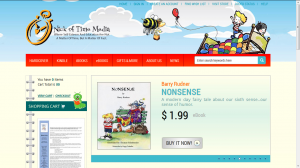 Barry Rudner has been a writer and poet of self-esteem books for children for over thirty years. This journey has allowed him to write about universal truths such as reaching for your dreams, being yourself, undying friendships, homelessness, and disability awareness. He is the product of an incredible education that was a gift from his parents; Silent Voice and his previous releases are his gift in return. He firmly believes that we cannot educate children unless they feel good about themselves, and ultimately, when they grow up, they will not feel good about themselves unless they are educated.
Barry Rudner has been a writer and poet of self-esteem books for children for over thirty years. This journey has allowed him to write about universal truths such as reaching for your dreams, being yourself, undying friendships, homelessness, and disability awareness. He is the product of an incredible education that was a gift from his parents; Silent Voice and his previous releases are his gift in return. He firmly believes that we cannot educate children unless they feel good about themselves, and ultimately, when they grow up, they will not feel good about themselves unless they are educated.

By: KatherineS,
on 3/20/2014
Blog:
OUPblog
(
Login to Add to MyJacketFlap)
JacketFlap tags:
Books,
Downs Syndrome,
art,
Autism,
*Featured,
Science & Medicine,
Health & Medicine,
Developmental Psychology,
theory of mind,
Psychology & Neuroscience,
Autism and Talent,
autistic children,
Lance Workman,
Pattern Detection,
Uta Frith,
Add a tag
Dame Uta Frith was the neuroscientist who first recognised autism as a condition of the brain rather than the result of cold parenting. Here she takes Lance Workman on a journey through her collection of memories.
Lance Workman: I believe you initially began your studies with history of art in Germany, but then became interested in psychology, and autism in particular.
Uta Frith: At school I was not particularly good at science subjects and much better arts and languages. No wonder these were the subjects I was expected to study at university. But looking back, this is a common situation for girls to be in, and it was a bit of a trap. Actually, I had many diverse interests. So, one thing I love to tell girls in a similar situation is that you can escape the trap. You can change your mind about what you’d like to study. The school I went to in Germany gave me a nice all-round education, including nine years of Latin and six years of Greek. I absolutely loved it. I dreamt my future would be to study ancient civilisations – finding treasures and deciphering texts in some long-lost language! By comparison, art history is far more down-to-earth. The art history courses offered at my university were fascinating. They allowed me to explore different artists, different times, places and materials. But I was very curious about what was on offer elsewhere. I went to lots of different lectures and remember my timetable being completely full up. This seemed to me the best thing about being a student: soaking up learning while being inspired by the commitment that eminent scholars bring to their subjects.
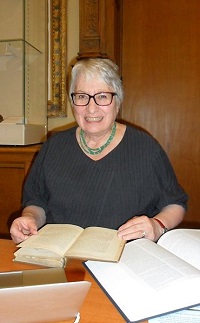
Uta Frith
At that point I only had a very nebulous and indeed misguided idea of what psychology was about. But I happened to drift into a lecture on analysis of variance. Far from being put off, the idea that you could use stats to measure psychological abilities strangely appealed to me. For the first time I learned that it was possible to do experiments about how people remember things, and how they solved problems, or rather how they failed to solve them. So I went to the psychology department and asked if they would take me on as a student. I ended up doing more and more psychology and less and less art history, mainly because the psychology course was well structured with an exam at the end. This certainly gave me some focus. It occurred to me gradually that it was the mind I was interested in, and even more gradually that this included the brain. As part of the psychology course I took similar courses to the medics. I have to admit that the physiology lab classes were rather tough for me. There were some alarming moments involving spinal frogs. Better by far were the lectures and case demonstrations in the university psychiatric clinic. This was more than exciting – it was the most intellectually thrilling experience that I ever had. The professor was renowned for his ability to present cases to students. He clearly enjoyed himself in these demonstrations, and the patients he selected played along good-naturedly. I very much wanted to understand what was the matter with them, why they suffered from invisible and intangible phenomena. So, if anything, that was what got me totally hooked into psychology.
Lance Workman: You came to England around this time. How did that come about?
Uta Frith: Well, I needed to learn English to read the textbooks and journals – and so I came to London. I found I liked it even more than Paris, and that was saying something. I went to visit the Institute of Psychiatry, because I had heard of Hans-Jürgen Eysenck, who was the head of department. I was extremely taken with his books that were debunking the woolly end of psychology and psychoanalysis. Like everyone else I had read Freud and swallowed it wholesale. But Eysenck’s books threw a different light on things. Where was the evidence for Freud’s theories? If the evidence was in the patients that were cured, then it was very thin indeed. If the patients did not get better, then apparently this was because they resisted. Something was not quite right here. It seemed a suspiciously circular argument. I saw Professor Eysenck only very briefly, but he seemed happy enough for me to stay around to see if I could do odd jobs. One of the lecturers, Reg Beech, gave me some data to analyse from an experiment he had done with patients who had obsessive compulsive disorder.
My job was quite basic – correlations, that sort of thing – but I enjoyed doing it. It was an exciting environment where psychologists tested hypotheses, and treated patients, not with psychotherapy, but with methods based on learning theory. I found out that there was a unique course in clinical psychology, and I was longing to be able to do this course. So I went to the head – Monte Shapiro – and asked if he would take me on. Amazingly, he did, and I am for ever grateful to him. Then I had to tell my parents. I knew I imposed a heavy financial burden on them, because the exchange rate between the pound and the Deutschmark was extremely poor at that time. However, they were always unbelievably supportive of me and of anything I decided to do. So they accepted my sudden change of plan.
At some point during the course I found out about autism. I was completely fascinated as soon as I met the first autistic child, and have been ever since. By sheer luck, the Institute of Psychiatry was the place to be for anyone interested in autism – Mike Rutter, Lorna Wing, Neil O’Connor and Beate Hermelin; all these heroes were there at that time.
Lance Workman: Things were really very different then. What was the prevailing view on autism during the 1960s and 70s in terms of causes?
Uta Frith: The prevailing view was that something in psychosocial relations had gone wrong during early development, and that this caused the state of autism. Still, at the Institute there was also the view that autism should be seen in the context of mental deficiency. This was a term for conditions thought to be due to brain pathology. To me, however, the autistic children didn’t look like other children with mental disabilities. Was there a hidden intelligence? Many of the children I met had no language. Could they perhaps learn to speak? Would they then grow out of their autism? The children with Down’s syndrome I met did have language and were quite social – but the autistic children were so strange, so different.
Lance Workman: You once described autistic children as being like the ones in John Wyndham’s The Midwich Cuckoos – later made into the film Village of the Damned.
Uta Frith: This is one of the romantic images about autistic children I have toyed with. I freely admit that some of my fascination was fed by romantic notions. At first I thought it would be very difficult to study autistic individuals in a strict experimental fashion. Perhaps case studies were the only way. Then I happened to read a paper by Beate Hermelin and Neil O’Connor and realised that it was after all possible to do experiments with these children. I plucked up courage and managed to talk to them a couple of times. One day they asked me whether I would like to do a PhD. I didn’t hesitate for a second. I immediately knew that this is what I wanted to do.
This whole area of research into disorders of cognitive development was only just beginning, and I happened to be in the right place. When people asked what I was doing and I said I studied autistic children, they invariably thought I was studying artistic children! When I did explain about autism, they generally thought it was odd to study something that was so very rare.
Lance Workman: Things changed radically, with you as one of the people that suggested autistic children couldn’t mentalise. Did that happen overnight or was it an idea that gradually emerged?
Uta Frith: The ground for the idea was well prepared in many ways. The rigorous experimental approach to autism pioneered by Hermelin and O’Connor was one thing, and so was the finding that the really critical feature of autism was not people’s aloofness, but their strange failure in reciprocal communication. ‘Theory of mind’ was an idea which just then surfaced and inspired developmental psychologists Heinz Wimmer and Josef Perner. It only needed these strands bringing together. There was a sort of insight moment: If young children needed a ‘theory of mind’ in order to understand pretend play, as Alan Leslie argued, then it was possible that autistic children who had recently been found to lack pretend play, did not have a ‘theory of mind’. Simon Baron-Cohen started his PhD at this time and carried out the critical experiments. One of them has become a classic experiment with the Sally-Ann False Belief Task. Simon found that autistic children aged 9–10 years failed this task when children with Down’s syndrome and ordinary five year-olds succeeded. John Morton suggested the novel term ‘mentalising’, short for ‘the ability to use mental states such as intentions and beliefs to predict behaviour of others and self’. So we all continued to work on the idea that mentalising failure might be key to the social impairments in autism.

Autistic Teen
Lance Workman: You found that specific deficit?
Uta Frith: Yes we did find a specific deficit in social cognitive processing, and we designed other tests to show that there was no general cognitive impairment that would explain the results. But it was very difficult to get these ideas accepted. We wanted to claim that there was a neural basis to this specific deficit and that this might help us to identify a cause of autism in the brain. At the time brain imaging had just emerged. It was almost like science fiction. Here was an amazing technique that promised to make thinking in the brain visible. What about thinking about mental states? Of course, I could not have dreamt of doing brain imaging studies on my own. But fortunately [my husband] was very much involved in the early development of functional imaging techniques, and he was brave enough to give it a go. His colleagues have told me since that, at the time, they thought he was completely mad to do this. It took about 10 years for other centres to take up these crazy ideas and pursue them further. Today it is taken for granted that there is a mentalising system in the brain. What we still don’t know, however, is in what way this system is or is not working in autism. This has proved very elusive. I still remember that we expected to get an immediate and clear answer to this question. How naive!
Lance Workman: You have also suggested that autistic individuals might have some cognitive advantages?
Uta Frith: At least 10% have outstanding talents, and possibly as many as 30% have superior abilities in quite specific areas, and it is important to explain these. My hope was that one single cause might explain these special abilities and at the same time the undeniable weaknesses that show up in tests such as ‘Comprehension’. That’s how I arrived at the theory of weak central coherence. Weak central coherence is when you can’t see the wood for the trees. This can be both an advantage and a disadvantage. There are tasks where it is important to resist the pull of the big picture, for example when you need to find a hidden object. Amitta Shah, another of my brilliant PhD students, showed that autistic children are good at finding hidden figures, and can easily see how to segment a picture in the Block Design Test. On the other hand, they may often miss the main point of a question in the ‘Comprehension’ test. Then Francesca Happé came along and showed that you don’t have to be autistic to have a detail-focused processing style. Sarah White, a more recent PhD student, found that it is only a subgroup of autistic children who show weak central coherence. To my mind these are the children I used to see long ago, very much like the ones Kanner described. They are the classic cases that still exist, but now they are only a small part of the whole autism spectrum. We still don’t know how to explain the amazing talent seen in some autistic individuals, but one ingredient may be the ability to zoom in easily on a small detail and stay there until it is mastered by countless repeats.
Lance Workman: The film Rainman brought autism to the attention of the public in the 1980s. Do you think that was a good portrayal of an autistic individual?
Uta Frith: It was an outstanding portrayal, even though the character of Rainman was based on a composite of a number of autistic people. Apparently, Dustin Hoffman studied these people carefully, and managed to convey for the first time their endearing naivety and their charming social faux pas. The film increased the awareness of the condition, especially in adults. It may also have increased the unrealistic expectation of outstanding talent. Most importantly, it helped to lessen any feelings of fear and dread about autism.
Lance Workman: You mentioned your husband earlier, Chris Frith. When I interviewed him, one question I asked was How do you feel about working with your wife? I’m curious if I ask you the same question about him to see whether you give the same answer?
Uta Frith: It’s a marvellous feeling. We have always talked to each other about our work and have read each other’s papers in early drafts. We have always been interested in each other’s work, and it helped that it was different. It was no accident that we were in separate departments and were pursuing different projects. It is only really in recent years that we have been working together. We found that we enjoy it! I think writing together has worked very much to my advantage. Chris often starts drawing out a structure and puts down rough ideas. Then I just have to do a bit of editing and expanding. It seems like a free ride.
A version of this article originally appeared in The Psychologist.
Uta Frith is a developmental psychologist working at the Institute of Cognitive Neuroscience at University College London. She is author of Autism and Talent, Autism: A Very Short Introduction, and Autism: Mind and Brain.
Subscribe to the OUPblog via email or RSS.
Subscribe to only psychology articles on the OUPblog via email or RSS.
Image credit: (1) Uta Frith at an Ada Lovelace Day editathon in the Royal Society. Photo by Katie Chan. CC-BY-SA-3.0 via Wikimedia Commons. (2) Autistic Teenage Girl. Photo by Linsenhejhej. CC-BY-SA-3.0 via Wikimedia Commons.
The post From art to autism: a Q&A with Uta Frith appeared first on OUPblog.

 If you read my Huffington Post article “Unfrozen: How a Disney Movie Gave My Daughter Hope,” then you know that I have no prejudice against Disney movies. Indeed, I love a great story whether in book, ebook, or movie form, and the great Disney movies have as much power to heal or inspire as any other.
If you read my Huffington Post article “Unfrozen: How a Disney Movie Gave My Daughter Hope,” then you know that I have no prejudice against Disney movies. Indeed, I love a great story whether in book, ebook, or movie form, and the great Disney movies have as much power to heal or inspire as any other.
Thank you to Maria Tatar, John L. Loeb Professor of Germanic Languages and Literatures at Harvard for posting a link to Ron Suskind’s astonishing story of his autistic son Owen’s journey back to the land of neurotypicals through speech development and emotional resonance as learned by watching his favourite Disney movies, repeatedly, over many years. “No sidekick gets left behind” is a quote from Owen, an example of one of the first sentences he ever spoke. Suskind has a book coming out and the linked article is an excerpt. I promise that if you read this article, you will feel better for having done so. If not, write me and we’ll talk.
Share/Bookmark

By: KatherineS,
on 3/13/2014
Blog:
OUPblog
(
Login to Add to MyJacketFlap)
JacketFlap tags:
Psychology & Neuroscience,
Andy Calder,
Brain Sciences,
Cognitive Neuroscience,
obituary,
calder,
cognition,
nephews,
nieces,
andy,
Books,
Autism,
*Featured,
Conduct Disorder,
Science & Medicine,
Face Perception,
Oxford Handbook of Face Perception,
Social Abilities,
Susan Gathercole,
The Psychologist,
1965–2013,
gathercole,
neuroscientist,
Add a tag
By Susan Gathercole

Andy Calder (1965–2013)
Andy Calder, dearly loved by his family and his many friends and colleagues from all over the world, died unexpectedly on 29 October 2013. Born in Edinburgh in 1965, he was a loving brother to his sisters Kath and Clare and brothers-in-law Gary and Tony, and a devoted uncle to his nieces and nephews.
Andy was known internationally as a leading cognitive neuroscientist. He was a deep thinker, a meticulous experimenter, and an inspiration for those who worked alongside him. His ground-breaking research led to major new insights into vital social abilities, such as how we recognise faces, and how the brain processes and distinguishes between emotions.
After completing a PhD at Durham, Andy joined the MRC Cognition and Brain Sciences Unit at Cambridge (then the Applied Psychology Unit) in 1993, becoming a programme leader in 2000. In addition to his dedicated team in Cambridge, Andy worked closely with many collaborators, bringing to each project excellence in methods and precision in scientific thinking. This led to new discoveries including the brain systems that underlie unusual social abilities in conduct disorder and autism.
The news of his untimely death is devastating for all that knew him. Not yet 50, Andy had a wonderful future as a scientist still ahead of him. His abilities to answer important fundamental questions using rigorous methods will continue to inspire his many collaborators and the broader field of social neuroscience. A passion for overseas exploration made Andy a great travelling companion and a keen guest in the laboratories of his dear friends and fellow scientists, including Gilli Rhodes and Colin Clifford in Australia.
Andy was wonderful company. He was an entertaining house guest with his family every Christmas, and took a keen interest in all his nieces and nephews Clark, Amy, Ava, Rebecca, Cameron, Tim and Eve as they were growing up. He had a passion for film and theatre, and every summer would make the trip home to take full advantage of the Edinburgh Festival. A gifted pianist and singer, Andy was a key figure in pantomimes and productions in Cambridge. He made many lasting friendships with colleagues, who were delighted by his warmth, lightness of spirit, and wit (see colleagues’ memories).
Andy will be held dearly in the hearts of the many that knew him. He is greatly missed, but his spirit, life and achievements will be celebrated for many years to come.
Susan Gathercole is Unit Director at the MRC Cognition and Brain Sciences Unit. This article originally appeared on The Psychologist.
Andy Calder was a leading social cognitive neuroscientist at the MRC Cognition and Brain Sciences Unit. He was the lead author on Oxford Handbook of Face Perception.
Subscribe to the OUPblog via email or RSS.
Subscribe to only psychology articles on the OUPblog via email or RSS.
Image credit: Image courtesy of Susan Gathercole.
The post Memories of Andy Calder appeared first on OUPblog.

 The White Bicycle by Beverley Brenna
The White Bicycle by Beverley Brenna
Taylor Jane is living in the south of France for the summer, with her mother, her mother’s boyfriend, and his two sons. The youngest son has cerebral palsy and Taylor is employed as his personal care assistant (that sounds better than babysitter.) She hopes that her mother and Alan Phoenix don’t get married this summer, because then they’d be family, and it wouldn’t be a real job she can put on her resume.
Taylor wants a professional resume so she can lead her own lie, without her mother’s constant watching. She yearns for the independence and freedom that most girls her age have, but Taylor doesn’t. Yet.
Taylor is autistic but by this point in her life she has learned many ways to cope with her anger and frustration. She uses a lot of these ways very consciously and walks us through such things as sending her anger through her feet. She also looks back on her early childhood to see if there are connections that can be made between then and now, but it gives the reader great insight into her mindset, but also her growth as a person.
This is the third book in a series and while it completely stands alone and you don’t need to read the other books, I fell so in love with Taylor that I can’t wait to read the other two to see where she was before France.
I love this book because while Taylor has autism and that causes some of the obstacles to her independance, it’s not really the focus of the story. Trying to break away from home while still loving your parents is a fairly universal story and delicate line to walk for every young adult. Taylor’s mom uses the autism both as part justification, part excuse for holding Taylor too close. (But not in an overbearing way-- Taylor’s mom is also trying to find that balance of wanting your children near you forever and letting them go. The autism is an added complication, but, once again, universal story.)
I'm so glad this was a Printz honor. It's such an amazing book and if it hadn't won, I would have never known about it, let alone read it.
Book Provided by... my local library
Links to Amazon are an affiliate link. You can help support Biblio File by purchasing any item (not just the one linked to!) through these links. Read my full disclosure statement.

By: Nicola,
on 12/31/2012
Blog:
OUPblog
(
Login to Add to MyJacketFlap)
JacketFlap tags:
children,
Music,
language,
communication,
Psychology,
therapy,
Autism,
autistic,
disability,
ability,
music education,
child psychology,
*Featured,
musicology,
music therapy,
Science & Medicine,
Arts & Leisure,
Developmental Psychology,
theory of music,
adam ockelford,
applied musicology,
musical communication,
piano music,
proxy language,
psychology research,
Romy,
theory of mind,
using zygonic theory to inform music education,
romy’s,
ockelford,
Add a tag
By Adam Ockelford
I spend around 12 hours a week – every week – sharing thoughts, feelings, new ideas, reminiscences and even jokes with some very special children who have extraordinary musical talents, and many of whom are severely autistic. I’m Professor of Music at the University of Roehampton, and the children come to see me in a large practice room in Southlands College where there are two pianos, so we don’t have to scrap over personal space. My pupils usually indicate what piece they would like us to play together, and they tell me when they’ve had enough. Sometimes, they tease me by seeming to suggest one thing when they mean another. We share many jokes and the occasional sad moment too.
But the children rarely say a word. They communicate everything through their playing. For them, music is a proxy language.
On Sunday mornings, at 10.00 a.m., I steel myself for Romy’s arrival. I know that the next two hours will be an exacting test of my musical mettle. Yet Romy, aged 11, has severe learning difficulties, and she doesn’t speak at all. She is musical to the core, though: she lives and breathes music – it is the very essence of her being. With her passion comes a high degree of particularity: Romy knows precisely which piece she wants me to play, at what tempo and in which key. And woe betide me if I get it wrong.
When we started working together, four years ago, mistakes and misunderstandings occurred all too frequently, since (as it turned out), there were very few pieces that Romy would tolerate: the theme from Für Elise (never the middle section), for example, the Habanera from Carmen, and some snippets from ‘Buckaroo Holiday’ (the first movement of Aaron Copland’s Rodeo). Romy’s acute neophobia meant that even one note of a different piece would evoke shrieks of fear-cum-anger, and the session could easily grow into an emotional conflagration.
So gradually, gradually, over weeks, then months, and then years, I introduced new pieces – sometimes, quite literally, at the rate of one note per session. On occasion, if things were difficult, I would even take a step back before trying to move on again the next time. And, imperceptibly at first, Romy’s fears started to melt away. The theme from Brahms’s Haydn Variations became something of an obsession, followed by the slow movement of Beethoven’s Pathetique sonata. Then it was Joplin’s The Entertainer, and Rocking All Over the World by Status Quo.
Over the four years, Romy’s jigsaw box of musical pieces – fragments ranging from just a few seconds to a minute or so in length – has filled up at an ever-increasing rate. Now it’s overflowing, and it’s difficult to keep up with Romy’s mercurial musical mind: mixing and matching ideas in our improvised sessions, and even changing melodies and harmonies so they mesh together, or to ensure that my contributions don’t!
As we play, new pictures in sound emerge and then retreat as a kaleidoscope of ideas whirls between us. Sometimes a single melody persists for 15 minutes, even half an hour. For Romy, no matter how often it is repeated, a fragment of music seems to stay fresh and vibrant. At other times, it sounds as though she is trying to play several pieces at the same time – she just can’t get them out quickly enough, and a veritable nest of earworms wriggle their way onto the piano keyboard. Vainly I attempt to herd them into a common direction of musical travel.
So here I am, sitting at the piano in Roehampton, on a Sunday morning in mid-November, waiting for Romy to join me (not to be there when she arrives is asking for trouble). I’m limbering up with a rather sedate rendition of the opening of Chopin’s Etude in C major, Op. 10, No. 1, when I hear her coming down the corridor, vocalising with increasing fervour. I feel the tension rising, and as her father pushes open the door, she breaks away from him, rushes over to the piano and, with a shriek and an extraordinarily agile sweep of her arm, elbows my right hand out of the way at the precise moment that I was going to hit the D an octave above middle C. She usurps this note to her own ends, ushering in her favourite Brahms-Haydn theme. Instantly, Romy smiles, relaxes and gives me the choice of moving out of the way or having my lap appropriated as an unwilling cushion on the piano stool. I choose the former, sliding to my left onto a chair that I’d placed earlier in readiness for the move that I knew I would have to make.
I join in the Brahms, and encourage her to use her left hand to add a bass line. She tolerates this up to the end of the first section of the theme, but in her mind she’s already moved on, and without a break in the sound, Romy steps onto the set of A Little Night Music, gently noodling around the introduction to Send in the Clowns. But it’s in the wrong key – G instead of E flat – which I know from experience means that she doesn’t really want us to go into the Sondheim classic, but instead wants me to play the first four bars (and only the first four bars) of Schumann’s Kleine Studie Op. 68, No. 14. Trying to perform the fifth bar would in any case be futile since Romy’s already started to play … now, is it I am Sailing or O Freedom. The opening ascent from D through E to G could signal either of those possibilities. Almost tentatively, Romy presses those three notes down and then looks at me and smiles, waiting, and knowing that whichever option I choose will be the wrong one. I just shake my head at her and plump for O Freedom, but sure enough Rod Stewart shoves the Spiritual out of the way before it has time to draw a second breath.
From there, Romy shifts up a gear to the Canon in D – or is it really Pachelbel’s masterpiece? With a deft flick of her little finger up to a high A, she seems to suggest that she wants Streets of London instead (which uses the same harmonies). I opt for Ralph McTell, but another flick, this time aimed partly at me as well as the keys, shows that Romy actually wants Beethoven’s Pathetique theme – but again, in the wrong key (D). Obediently I start to play, but Romy takes us almost immediately to A flat (the tonality that Beethoven originally intended). As soon as I’m there, though, Romy races back up the keyboard again, returning to Pachelbel’s domain. Before I’ve had time to catch up, though, she’s transformed the music once more; now we’re hearing the famous theme from Dvorak’s New World Symphony.
I pause to recover my thoughts, but Romy is impatiently waiting for me to begin the accompaniment. Two or three minutes into the session, and we’ve already touched on 12 pieces spanning 300 years of Western music and an emotional range to match.
Yet here is a girl who in everyday life is supposed to have no ‘theory of mind’ – the capacity to put yourself in other people’s shoes and think what they are thinking. Here is someone who is supposed to lack the ability to communicate. Here is someone who functions, apparently, at an 18-month level.
But I say here is a joyous musician who amazes all who hear her. Here is a girl in whom extreme ability and disability coexist in the most extraordinary way. Here is someone who can reach out through music and touch one’s emotions in a profound way.
Click here to view the embedded video.
Romy playing piano with musical savant Derek Paravicini and Adam Ockelford
I explore the science of how Romy and her peers are able to do what they do in my new book Applied Musicology, which uses a theory of how music makes sense to all of us to explore intentionality and influence in children who use little or no language. If music is important to us all, it is truly the lifeblood of many children with autism. Essential brain food.
Adam Ockelford is Professor of Music and Director of the Applied Music Research Centre at the University of Roehampton in London. He is the author of Applied Musicology: Using Zygonic Theory to Inform Music Education, Therapy, and Psychology Research (OUP, 2012).
Subscribe to the OUPblog via email or RSS.
Subscribe to only music articles on the OUPblog via email or RSS.
Subscribe to only psychology articles on the OUPblog via email or RSS.
The post Music: a proxy language for autistic children appeared first on OUPblog.


By: shelf-employed,
on 12/16/2012
Blog:
Shelf-employed
(
Login to Add to MyJacketFlap)
JacketFlap tags:
poetry,
nonfiction,
science,
favorites,
disabilities,
autism,
Non-Fiction Monday,
leaves,
announcement,
bio,
STEM,
Add a tag
As 2012 is quickly coming to a close, I'll use today's Nonfiction Monday event to feature my two favorite nonfiction books of the year - one for young listeners and one for older readers.
Without a doubt, my favorite nonfiction book for older readers was
Educational, inspirational, celebratory!
Though I first reviewed it in March, it has remained on the top of my list. Click the title for my review.
Rhyming, whimsical, gorgeous illustrations!
(click the title for my review)
If you haven't checked out these two nonfiction books yet, hurry to your library or bookstore!
They're not to be missed!
Just got back from my daughters' talent show (we stopped off for a well-earned McDonalds on the way home)..
Even though I go every year, there's something about watching a group of special needs children singing, dancing, telling jokes and generally having a hoot and a half on stage which makes me want to laugh, cheer and cry my eyes out, all at the same time.
I feel immensely proud, not to mention emotionally drained.
If you need me, I'll be in my office, counting my blessings.
I are a proud dad
Since this is Autism Awareness Month we want to remind you of some of our great titles featuring children (both real and fictional) with autism. Many of these titles have won awards and are excellent books to read to kids to help them understand more about autism and autism spectrum disorders. Pick up a copy today.

Autism & Me: Sibling Stories by Ouisie Shapiro, photos by Steven Vote
• A 2010 Notable Social Studies Trade Book for Young People
• IRA-CBC Children’s Choices 2010

Ian’s Walk: A Story about Autism by Laurie Lears, illustrated by Karen Ritz
• 2002 Children’s Crown Gallery Award Master List
• Dolly Gray Children’s Literature Award
• Outstanding Books for Young People with Disabilities 1999, International Board on Books for Young People
• Pick of the Lists, American Bookseller

Looking after Louis by Lesley Ely, illustrated by Polly Dunbar

Waiting for Benjamin: A Story about Autism by Alexandra Jessup Altman, illustrated by Susan Keeter
• Outstanding Books for Young People with Disabilities 2009, International Board on Books for Young People








0 Comments on
April is also Autism Awareness Month as of 1/1/1900












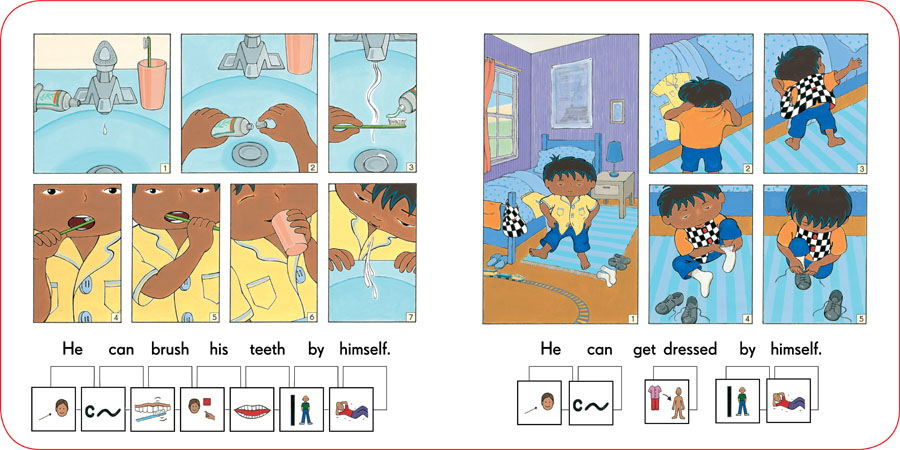








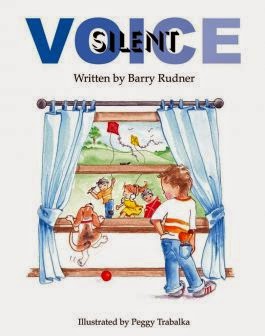




 If you read my Huffington Post article
If you read my Huffington Post article 








 0 Comments on April is also Autism Awareness Month as of 1/1/1900
0 Comments on April is also Autism Awareness Month as of 1/1/1900

[…] Interview on The Children’s and Teen’s Book Connection […]